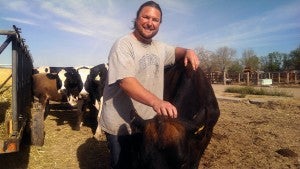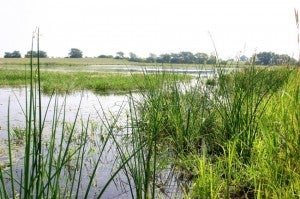
EDF’s Robert Parkhurst participated in the 2014 California Educational Fellowship, organized by the California Agricultural Leadership Foundation and its alumni.
I recently had the unique opportunity to learn firsthand how central California farmers are constantly changing the way specialty crops are grown, squeezing more from fewer resources and reducing their impacts on the environment.
I joined a handful of other ag policy experts in a visit to the Salinas Valley, considered “the salad bowl of the world,” where we learned about the current issues and complex challenges facing the state’s farmers and ranchers. The trip was organized by the California Agricultural Leadership Foundation.
Running about 90 miles from Monterey to San Luis Obispo, the Salinas Valley alone grows more than 85 percent of the nation’s artichokes, 55 percent of the nation’s lettuce and 30 percent of the nation’s strawberries. It also leads the state of California in the production of broccoli, celery, mushrooms and cabbage.



